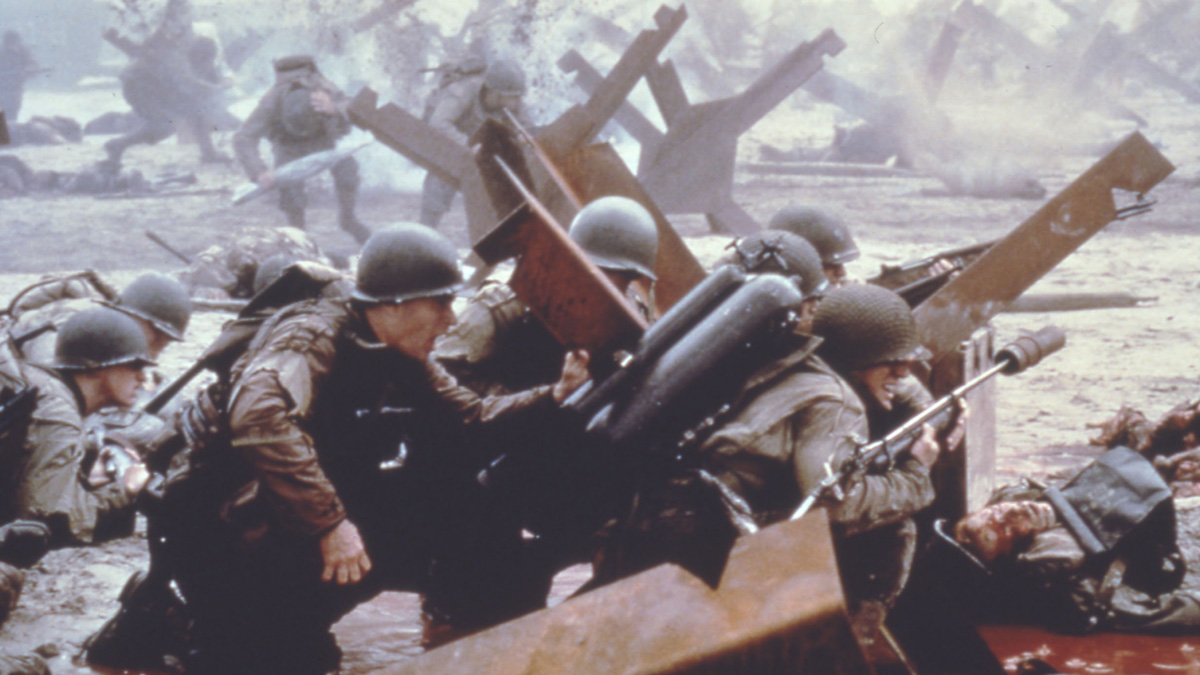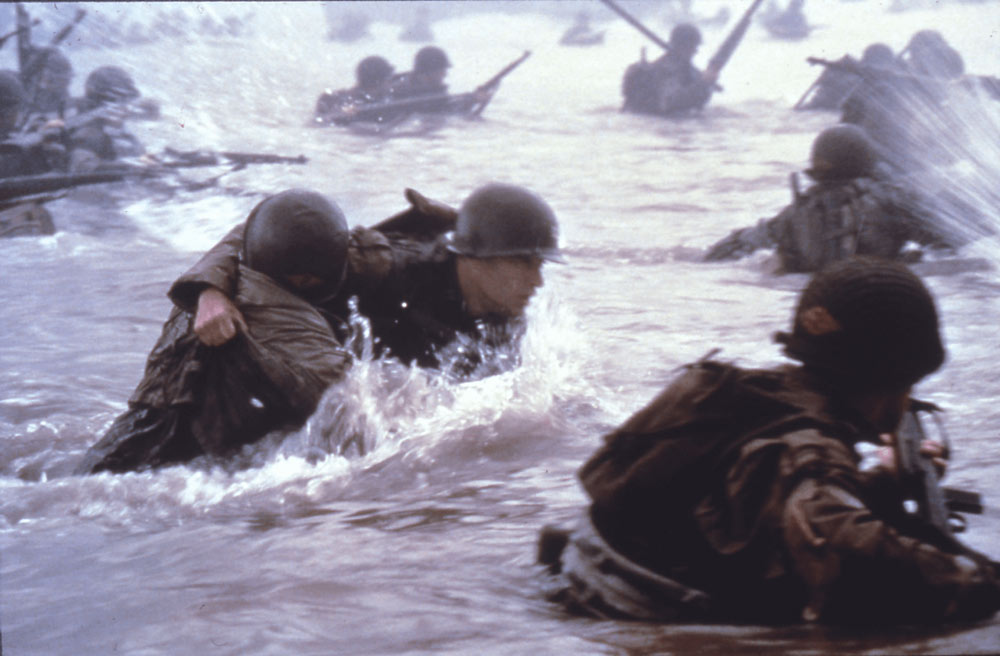
TM & (C)1998 PARAMOUNT PICTURES and DREAMWORKS LLC and AMBLIN ENTERTAINMENT. ALL RIGHTS RESERVED.TM & (C) 2013 Paramount Pictures and DW Studios LLC and Amblin Entertainment. All Rights Reserved.
Before and after ``Saving Private Ryan.'' Spielberg revolutionized depiction of battlefields
2018.03.21
``Battle of Omaha Beach'' uses various filming techniques
To make his approach more convincing, Spielberg photographed the battle scenes in the movie so realistically that they could be mistaken for reality. In particular, the opening scene, a reenactment of the Battle of Omaha Beach, one of the most brutal of the Allied Forces' Normandy landings, will leave anyone wanting to cover their eyes with its horror. Soldiers drowning as a result of being heavily armed, soldiers having their limbs torn off by German bombing, numerous corpses folded on top of each other on the red shoreline, etc. Up until now, war movies have depicted the landing operation as a leisurely victory due to the Allies' overwhelming military commitment. However, Spielberg focuses on the genocide that lay behind such victory and refuses to justify the battle.
However, the filming method used by Spielberg for this purpose was mainly a low-tech style that was the complete opposite of the cutting-edge visual effects of films such as Jurassic Park , in which the audience's vision was assimilated into the chaos of Omaha Beach. be. By eliminating the effects of camera functions such as zoom and slow motion, and using hand-held cameras in the style of documentary footage from the 1940s, the physical reality of war is clearly and immediately captured.
Spielberg also shot without the use of storyboards or storyboards, which allow the crew and actors to share production plans. The effect is that it conveys the intention of ``capturing chaos as it is,'' and it is no exaggeration to say that it is a methodology that claims to be a documentary.

Saving Saving Private Ryan& (C)1998 PARAMOUNT PICTURES and DREAMWORKS LLC and AMBLIN ENTERTAINMENT. ALL RIGHTS RESERVED.TM & (C) 2013 Paramount Pictures and DW Studios LLC and Amblin Entertainment. All Rights Reserved.
Cinematographer Janusz Kaminski technically followed Spielberg's efforts. He is now well known as Spielberg's exclusive cinematographer, and based on the biography of the man who saved 1,300 Jews from the Nazi threat, `` Schindler's List '' (1994), he developed the trends in the shooting style of Spielberg's films. He is an important person who changed things.
In this work, Kaminsky uses a specially designed camera with the protective coating removed from the lens to create the feeling of being in the field, with light shining through, and blood and water splashing directly onto the screen. Second, by narrowing down the movie camera's shutter opening angle from the average 180 degrees to 45 degrees, motion blur (the blurring of the subject that occurs during shooting) is suppressed, creating a uniquely choppy image. The resulting strobe effect simulated a panic disorder similar to eyelid twitching, and was so realistic that it brought flashbacks to veterans who watched the film.

